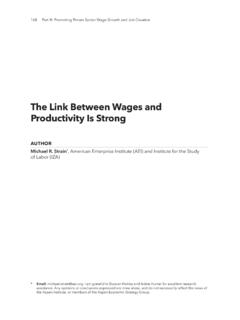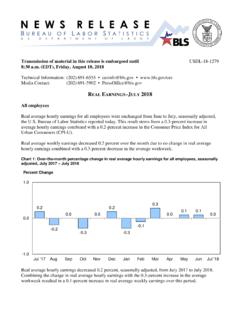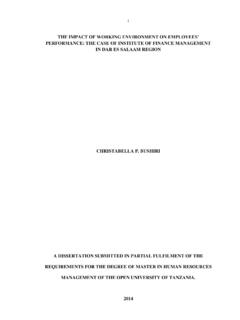Transcription of An investigation of Zimbabwe’s manufacturing sector ...
1 International Journal of Development and Sustainability Online ISSN: 2186-8662 Volume 1 Number 2 (2012): Pages 581-598 ISDS Article ID: IJDS12081103 An investigation of zimbabwe s manufacturing sector competitiveness David Damiyano 1*, Lazarus Muchabaiwa 1, Bongani Edwin Mushanyuri 1, Collins Prosper Chikomba 2 1 Bindura University of Science Education, Faculty of Commerce, Department of Economics, Private Bag 1020, Bindura, zimbabwe 2 Bindura University of Science Education, Faculty of Commerce, Department of Financial Intelligence & Security Studies, Private Bag 1020, Bindura.
2 zimbabwe Abstract This research paper seeks to establish how effective to measure manufacturing sector competitiveness from existing literature. The objective of this research study is premised on establishing cause and remedies to gain manufacturing competitiveness. Survey data affecting manufacturing sector competiveness like crime, corruption, finance, technology, firm characteristics, workforce characteristics and trade openness was analysed. A regression of volume of manufacturing index (VMI) against imports, electricity usage, exports, GDP, proportion of GDP to electricity usage and FDI was done.
3 It can be concluded that transaction costs need to be reduced and concentrate on improving exports, proportion of electricity per output and FDI. Keywords: manufacturing sector competitiveness, Volume of manufacturing index Copyright 2012 by the Author(s) Published by ISDS LLC, Japan International Society for Development and Sustainability (ISDS) Cite this paper as: Damiyano, D., Muchabaiwa, L., Mushanyuri, and Chikomba, (2012), An investigation of zimbabwe s manufacturing sector competitiveness , International Journal of Development and Sustainability, Vol.
4 1 No. 2, pp. 581 598. * Corresponding author. E-mail address: International Journal of Development and Sustainability (2012): 581 598 582 ISDS 1. Introduction The concept of competitiveness has received attention as a determining factor of firm performance and economic growth.
5 World over economists have accepted competitiveness as multi faceted without a single agreed definition mainly as a result of difficulties in measuring it. It has been easy to measure it at firm level because of disaggregation but it becomes most exigent at national level to infer economic performance. 2. Background The manufacturing sector in zimbabwe has declined in line with the decline in economic activity for the past decade due to various factors including the hyperinflationary environment that peaked at an official figure of 231 million per cent in 2008 (CZI Survey, 2009).
6 During this period, the business environment was characterised by a lack of working capital support, a shrinking domestic market, high utility tariffs, higher than regional tax structures, high wages, credit and liquidity crunch, and a variety of supply-side bottlenecks that included fuel, electric power, imported inputs and skills. Demand for local products has also declined as a result of a possible shift in consumption patterns in favour of cheaper imported goods. zimbabwe s macro-economic environments were ranked number 109 out of 117 countries according to the World Economic Forum s 2005 Global Competitiveness Report.
7 zimbabwe s economy declined by more than 40% of its real GDP since 1997 and exports have fallen by a proportion of more than half. FDI has dropped from USD 444 million in 1998 to USD 9 million in 2004. Industry officials say more than 400 companies have closed since 2000, leaving over 90% of people unemployed. Going forward, the manufacturing industry requires a strategy to improve and restore the manufacturing competitiveness it once enjoyed. The local manufacturers need to recognize that the playing field has changed significantly and that the new business environment presents new challenges.
8 3. Overview Globalisation and market liberalisation have become realities for zimbabwe , and it brings along opportunities to the local industry in as much as it brings threats. Zimbabwean companies are facing increasing competition and are struggling to cope both on the exports and imports front in an international economic setting. According to Karim (2009), there are unprecedented pressures on companies to improve their operational efficiency for enhanced competitiveness and overall business performance.
9 He further elaborates that such pressures include competition from foreign products, new product introduction by competitors, rapid technological improvements and shorter product life cycles, unanticipated customer shifts, and advances in manufacturing and information technology. He states that under the new economic International Journal of Development and Sustainability (2012): 581 598 ISDS 583 conditions, the organization must deliver a reliable product, or service, on time and ensure that customer desires are fulfilled.
10 To survive these challenges and to benefit from the opportunities that come along with globalisation, Zimbabwean manufacturing companies need to become internationally competitive through improving operational efficiency and management practice. In addition, is important that zimbabwe s domestic policies create an environment that allows local businesses to grow and to elevate the level of manufacturing superiority to attain international competitiveness. zimbabwe s economy is at its crossroads where it can now recover from over a decade of contraction and regain regional competitiveness it once enjoyed.






